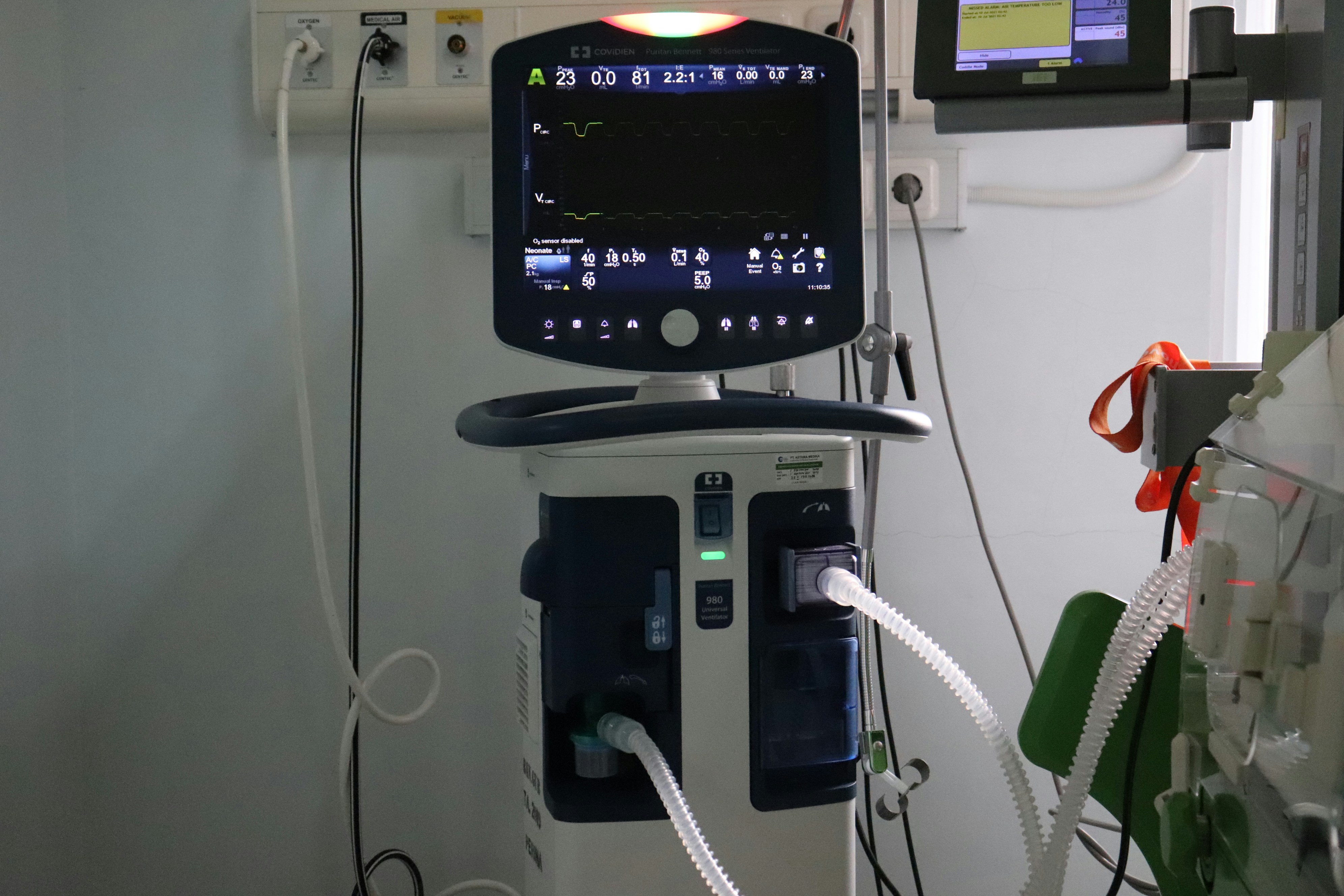
Why Medical Technology Careers in the UK Are Becoming More Multidisciplinary
Medical technology (medtech) is transforming healthcare in the UK — from wearable sensors to AI diagnostic tools, from surgical robots to telemedicine platforms. Advances in hardware, software, data and connectivity are enabling more personalized, efficient and accessible care. But with great power comes great responsibility.
As medical devices and health technologies enter hospitals, clinics and consumers’ homes, professionals in this domain must master much more than engineering and algorithms. They must also understand law, ethics, psychology, linguistics & design. That is, medtech careers are now deeply multidisciplinary.
In this article, we explore why medical technology careers in the UK are becoming more multidisciplinary, how these five allied fields now intersect with medtech work, and what job-seekers and employers should do to succeed in this evolving ecosystem.
Why medtech is evolving toward multidisciplinary roles
1) Regulation is central in healthcare
Medical devices, diagnostics, software as a medical device (SaMD) and health apps are tightly regulated. Compliance with UK and EU rules — such as Medicines and Healthcare products Regulatory Agency (MHRA) standards, Medical Device Regulation (MDR), In Vitro Diagnostic Regulation (IVDR), data protection (GDPR) and NHS procurement rules — is nonnegotiable.
2) Ethical scrutiny is essential
Medtech affects human life, diagnosis, treatment decisions, privacy & autonomy. Ethical safeguards — fairness, auditability, patient consent, clinical validation, harm mitigation — are not optional; they are foundational.
3) Human factors matter profoundly
If devices or software ignore human cognition, workflow, error risk or trust, they can do harm, be misused or be abandoned. Psychology and human factors research inform usability, safety, adoption.
4) Clear communication saves lives
Medical instructions, consent forms, interface messages, error alerts — these must be unambiguous, comprehensible, inclusive and linguistically sensitive. Communication failures in health tech have real consequences.
5) Design connects function to adoption
Even the most advanced medical algorithm or hardware fails if it is difficult to use. User-centred design, accessibility, ergonomics and interface design are crucial in medical tech.
Intersection of medtech with law, ethics, psychology, linguistics & design
Medtech + Law: compliance, liability & standards
Why it matters Medtech products are subject to complex laws — device certification, liability, procurement contracts, intellectual property, clinical trial regulation, data protection in health. Legal knowledge ensures safe, marketable products.
What the work looks like
Drafting regulatory submissions (MDR, IVDR) for devices and software.
Ensuring post-market surveillance, vigilance, adverse event reporting.
Managing device liability claims & risk mitigation.
Defining contractual terms with hospitals, suppliers & service providers.
Navigating health data law (consent, anonymisation, data sharing).
Skills to cultivate Regulatory law in health, medical device standards, contract drafting, technical literacy to assess code & devices, ability to translate legal rules into specifications.
Roles you’ll see Regulatory affairs manager; product compliance officer; medtech legal counsel; clinical trials compliance lead; IP & patent specialist for medical devices.
Medtech + Ethics: designing for human health & dignity
Why it matters Medtech often deals with life-critical decisions, sensitive personal data, and vulnerable populations. Ethical frameworks help teams anticipate, mitigate and navigate harms.
What the work looks like
Running ethical risk reviews before deployment.
Defining fairness and bias protections in diagnostic models.
Ensuring informed consent with clear explanations of AI decisions.
Balancing transparency vs safety in medical alerts.
Establishing ethics boards, decision logs & escalation paths.
Skills to cultivate Bioethics, philosophical ethics, risk assessment, stakeholder engagement (patients, clinicians, regulators), ability to link principles with technical trade-offs.
Roles you’ll see Ethics officer for health tech; responsible innovation lead; healthtech risk auditor; clinical ethics liaison.
Medtech + Psychology: human factors, usability & adoption
Why it matters Medical devices and systems are used by clinicians and patients under stress, fatigue, distraction or anxiety. A design that ignores cognitive behaviour can lead to misuse, error or harm.
What the work looks like
Conducting usability studies in clinical settings.
Designing alert and warning systems that don’t overwhelm clinicians.
Incorporating trust calibration: when to prompt, when to automate.
Evaluating cognitive load, decision support fatigue, error recovery.
Studying how patients perceive and interact with medical devices in home settings.
Skills to cultivate Human factors engineering, cognitive psychology, HCI methods, survey/interview design, observational studies in clinical environments.
Roles you’ll see User experience researcher in medtech; human factors engineer; clinical usability specialist; behaviour change technologist in health.
Medtech + Linguistics: clarity in critical communication
Why it matters Medical technologies communicate risk, instructions, feedback, error states. Poor phrasing or ambiguous terms can cause misunderstandings, misuse or harm. In multi-lingual, multicultural settings, clarity is essential.
What the work looks like
Writing patient and clinician interface text and alerts in plain language.
Creating multi-language interfaces and documentation.
Ensuring consistency in clinical terminologies across regions.
Using NLP tools to summarise or translate medical data.
Translating medical jargon into accessible descriptions for patients.
Skills to cultivate Technical writing, applied linguistics, multilingual communication, discourse analysis, semantics, plain language design.
Roles you’ll see Medical technical writer; health communication specialist; interface linguist in medtech; localisation manager for health products.
Medtech + Design: making life-saving tools usable
Why it matters Design bridges technical capability and human use. In medtech, that means interfaces, hardware form, ergonomics, accessibility — ensuring safe, intuitive, trustworthy interactions.
What the work looks like
Prototyping dashboards for device monitoring or decision support.
Designing hardware housings, wearables, instrument panels with ergonomics.
Ensuring accessibility for users with impairments.
Testing in real clinical workflows.
Creating visualisations for health data to help interpretation.
Skills to cultivate Product design, interaction design, industrial design, prototyping, CAD, usability testing, accessibility standards, medical UI/UX.
Roles you’ll see Medtech product designer; UX designer for health systems; usability engineer; visualisation specialist for health data.
Implications for UK job-seekers
Hybrid strength wins: Combine engineering, software or data skills with legal, ethics, psychology, linguistics or design.
Case studies are powerful: Document cross-disciplinary work — e.g. compliance implementation, ethical audit, usability tests, interface text.
Familiarise yourself with healthcare regulation: Learn MHRA, CE/UKCA marking, clinical trial regulation, health data law.
Practice clinical context empathy: Understand hospital workflows, patient journeys & clinical decision making.
Network across disciplines: Engage with health law, design in health, bioethics & human factors communities.
Implications for UK employers
Recruit multidisciplinary teams: Engineers paired with legal, ethics, design & psychology expertise create safer, more trustworthy products.
Embed non-technical expertise early: Don’t bolt on compliance or usability at the end — involve these disciplines from concept.
Allocate time for usability & pilot testing: Iterative testing in real settings prevents critical failures.
Document decisions & trade-offs: Keep clear logs for regulation, audit and accountability.
Support interdisciplinary training: Offer training exchange across technical, regulatory, design & ethics domains.
Practical paths into multidisciplinary medtech careers
Short courses & certificates e.g. medical device regulation, health data ethics, human factors in medical devices, health communication or accessible design.
Cross-disciplinary projects Collaborate with clinicians, hospitals, patient groups or policy bodies to get exposure beyond pure engineering.
University centres & research groups Join medtech labs or translational research groups that include ethics committees, usability arms or design studios.
Internships / placements in healthcare settings Shadow regulatory affairs, clinical usability teams, or medical software deployment teams.
Open contributions & hackathons Participate in health tech challenges, design sprints or hackathons that bring together clinicians, designers & technologists.
CV & cover letter tips
Headline your hybrid strength: “Software engineer for medtech with regulatory expertise.”
Show outcomes, not just responsibilities: “Piloted usability test that reduced error rate by 20% in clinical trial device.”
Highlight regulation & ethics exposure: Mention MHRA, CE/UKCA marking, clinical ethics reviews, data privacy in health.
Quantify impact: Show metrics related to safety, user adoption, compliance improvements.
Tailor to UK health context: NHS, MHRA, UKRI health funding or UK hospital systems.
Common pitfalls & how to avoid them
Treating compliance as an afterthought → From the start, plan regulatory pathways.
Assuming usability is optional → Poor design kills adoption or leads to risk.
Ignoring clinical context → A device that works in lab may fail in hospital workflow.
Using opaque language → Patients & clinicians need clarity, not jargon.
Skipping documentation → Regulatory audits and safety investigations demand detailed records.
What the future holds for medtech careers in the UK
Hybrid job titles will proliferate Expect roles like “Regulatory AI Engineer in Medtech”, “UX Designer for Health Devices”, “Clinical Ethics Liaison Engineer”.
Assurance & auditing roles will expand Independent ethical, usability & regulatory audits of medtech systems will become standard.
Human factors research will deepen Greater investment in real-world clinical usability, decision support validation and behaviour in health contexts.
Health communication & linguistics will gain prominence As medtech becomes patient-facing, clarity, translation & accessible messaging will matter more.
Patient-centred design will be the baseline Devices will need to be safe, intuitive, adaptable for diverse users & usable in messy real settings.
Self-check questions to guide your development
Could you explain your medtech project in plain language to a clinician or patient?
Are you aware which UK regulations apply to your device or software?
Have you considered ethical risks and how to mitigate them?
Would a clinician or patient find your interface usable or confusing?
Are your alerts, warnings, instructions clear, precise & inclusive?
Do you have documentation of decisions, logs, data lineage & trade-offs?
If not, these are great areas to develop next.
Conclusion
The UK medtech field is at an inflection point. As medical devices, diagnostics & health software become more sophisticated and widespread, the roles in this sector demand more than just engineering or data science. They demand multidisciplinary fluency — in law, ethics, psychology, linguistics & design — because real health impact depends not only on capability but also safety, trust, usability & compliance.
For job-seekers, this is an invitation — bring your hybrid skills, connect disciplines and build impactful work that matters to people. For employers, it’s a mandate — build teams that embed nontechnical perspectives from the very start, prioritise human factors, document rigorously, and design for real-world use within regulation.
Your next medtech career won’t just be about building clever hardware or algorithms. It will be about building medical technology that people trust, regulators approve, clinicians use, and patients accept. That’s where the future lies.


